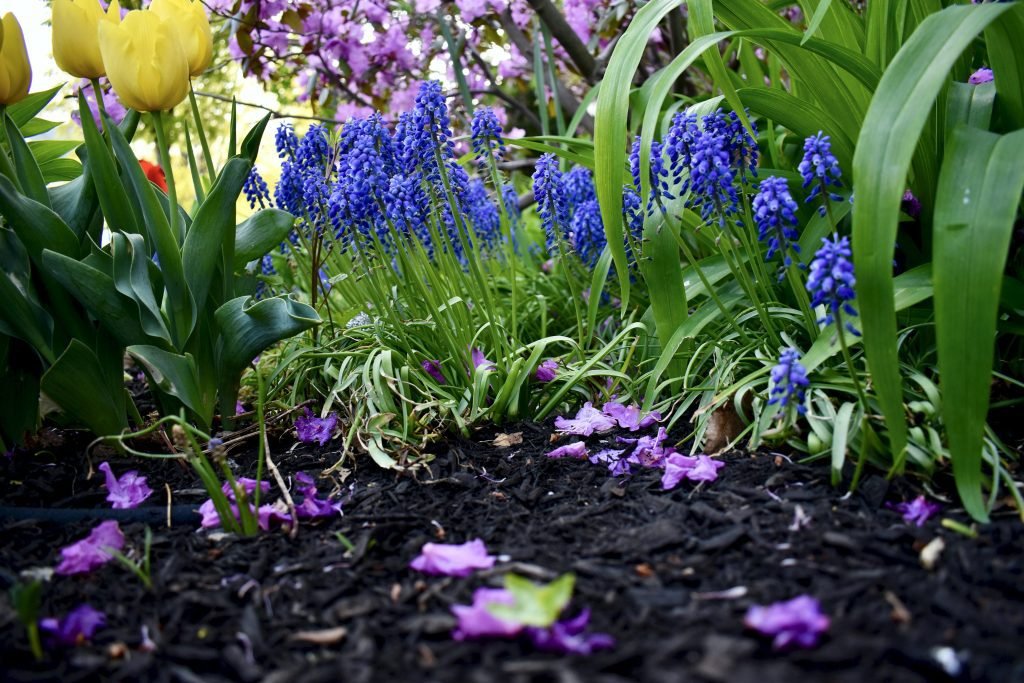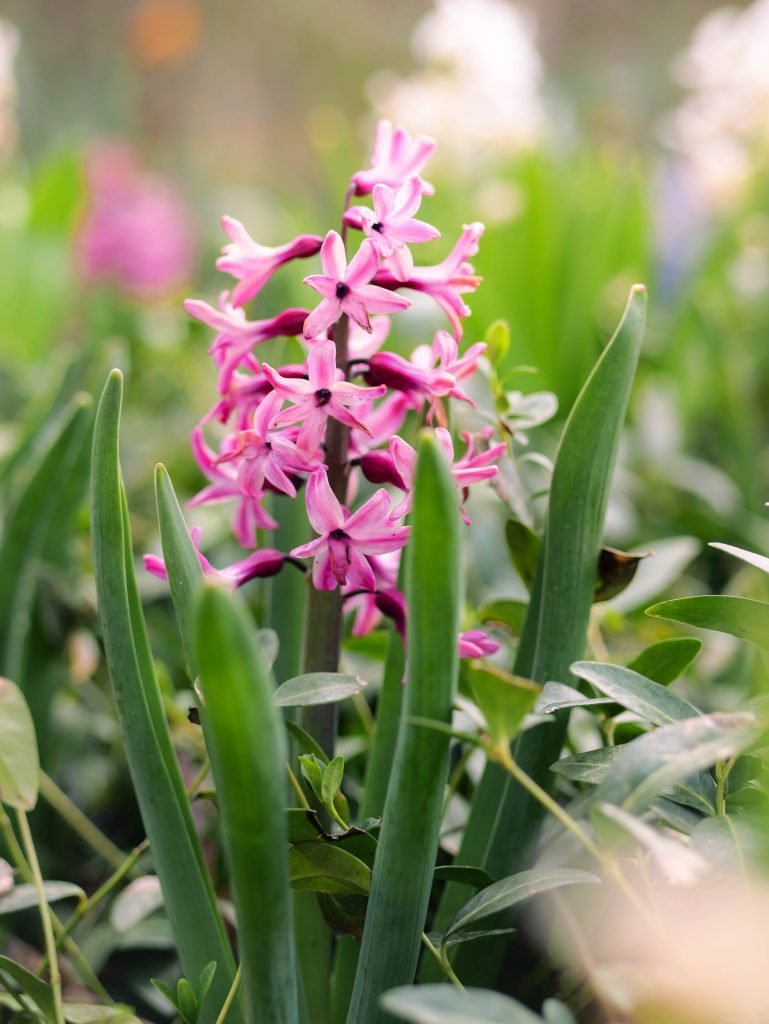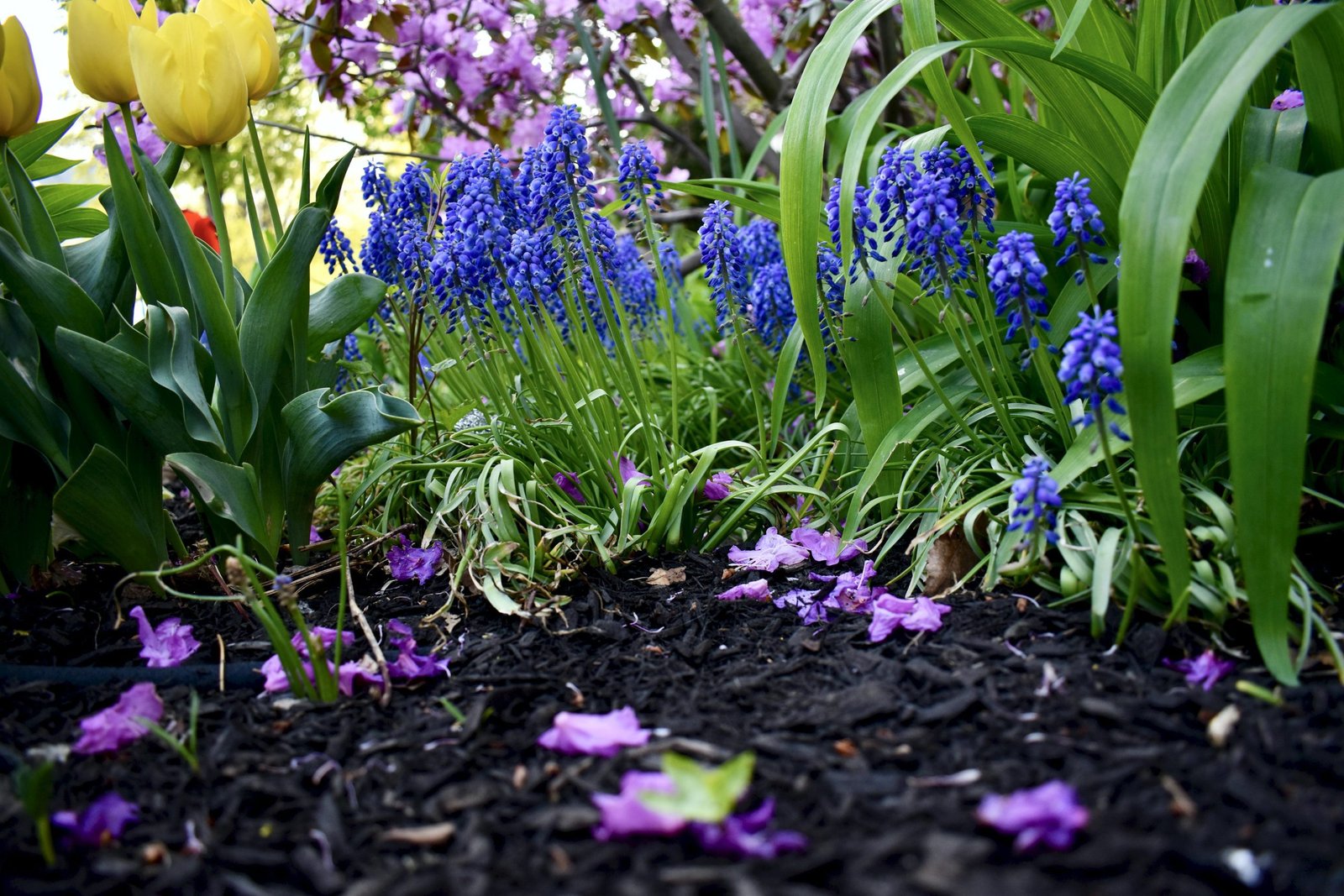If you’re looking to keep your yard well-maintained and pristine, then finding the best mulching option for your lawn mower is key. A lawn mower that excels at mulching not only helps to maintain the appearance of your yard, but it also provides several benefits for your lawn and the environment. From nutrient-rich clippings that fertilize your lawn to reducing the need for excessive watering and chemical fertilizers, a top-notch mulching lawn mower can make a world of difference. In this article, we will explore the qualities that make a lawn mower the best mulching option for your yard, giving you the knowledge to make an informed choice for your landscaping needs.

Types of Lawn Mowers
Push Reel Mowers
Push reel mowers are the traditional, old-fashioned types of lawn mowers. They are operated manually by pushing them across the grass, which in turn rotates the reel blades to cut the grass. These mowers are environmentally friendly and produce no emissions since they do not require any fuel or electricity. They are also relatively quiet and easy to maintain. However, push reel mowers may be more suitable for smaller yards with shorter grass, as they might struggle with taller or thicker grass.
Gas-Powered Lawn Mowers
Gas-powered lawn mowers are a popular choice among homeowners due to their power and versatility. These mowers are equipped with an internal combustion engine that runs on gasoline, providing the necessary power to cut through various types of grass and terrain. Gas-powered mowers are suitable for larger yards and can handle thicker grass with ease. However, they do emit exhaust fumes and can be noisy during operation.
Battery-Powered Lawn Mowers
Battery-powered lawn mowers offer the convenience of cordless operation without the need for gasoline. They are powered by rechargeable batteries, which provide a quiet and emission-free mowing experience. Battery-powered mowers are typically lightweight and easy to maneuver, making them a great option for smaller to medium-sized yards. However, their mowing time may be limited by the battery life, and it is important to ensure that the battery is fully charged before each use.
Electric Corded Lawn Mowers
Electric corded lawn mowers rely on a power cord plugged into an electrical outlet to run. They provide consistent power as long as they are connected to a power source, eliminating the need for recharging or refueling. Electric corded mowers are quieter and produce no emissions, making them an environmentally friendly option. However, the cord can restrict mobility and may require careful maneuvering to avoid tangling or running over it.
Riding Lawn Mowers
Riding lawn mowers are the go-to option for large yards or properties with significant amounts of grass to maintain. These mowers are equipped with a seat and controls, allowing you to ride and steer while cutting the grass. Riding mowers are powerful and efficient, saving you time and energy compared to other types of mowers. They typically have wider cutting widths and larger engines, making them suitable for cutting thick or tall grass. However, riding mowers are more expensive and require regular maintenance to keep them in good working order.
Robotic Lawn Mowers
Robotic lawn mowers are the newest trend in lawn care technology. These autonomous mowers operate on their own, navigating the yard using sensors and cutting the grass systematically. Robotic mowers are convenient and time-saving since they require minimal human intervention. They can work day or night, as well as in various weather conditions. However, they do have some limitations, such as requiring a defined perimeter boundary and potentially struggling with complex or uneven terrain.
Mulching Blades
Twin Blades vs. Single Blade
When considering mulching functionality, the design of the blades plays a crucial role. Mulching blades come in two main designs: twin blades and single blades. Twin blades are designed to create a more efficient cutting action, resulting in finer grass clippings for better mulching performance. Single blades, on the other hand, are simpler and more affordable, but may not produce the same level of mulching quality.
Lift Design
The lift design of mulching blades determines how they lift and cut the grass. A well-designed lift helps create an upward airflow, ensuring that grass is lifted before it is cut. This lifting action allows for a cleaner cut and promotes better mulching since the grass clippings are lifted and re-cut multiple times before being evenly dispersed back into the lawn.
Material and Thickness
Mulching blades can be made from different materials, such as steel or hardened alloy. The material and thickness of the blade can affect its durability and cutting performance. Thicker blades are generally more durable and less prone to bending or breaking, especially when dealing with tougher grass or small obstacles in the yard. Choosing high-quality blades made from durable materials can contribute to a longer lifespan and better mulching results.
Blade Length
The length of the blades can affect the cutting width and mulching performance of the mower. Longer blades tend to have a wider cutting width, which can be beneficial for covering larger areas in less time. However, it is important to consider the size of your yard and the accessibility of tight spaces or narrow paths. Additionally, longer blades may require a more powerful motor or engine to maintain the desired cutting performance.
Mulching Functionality
Mulching vs. Bagging
When it comes to lawn mowing, there are two main options for handling grass clippings: mulching and bagging. Mulching involves finely cutting the grass clippings and evenly distributing them back onto the lawn. This process allows the clippings to decompose, returning valuable nutrients to the soil. Bagging, on the other hand, collects the clippings in a bag or container for later disposal. Mulching has the advantage of being more environmentally friendly and providing additional nutrients for the grass, while bagging can be beneficial if you want a clean and debris-free lawn.
Mulching Benefits
Mulching offers several benefits for your yard. Firstly, it provides a natural source of fertilizer, as the grass clippings decompose and release nutrients back into the soil. This can help improve the overall health and appearance of your lawn. Additionally, mulching can help regulate soil temperature, retain moisture, and reduce weed growth. It also saves time and effort compared to bagging, as there is no need to stop and empty the collection bag.
Mulching Technique
To achieve optimal mulching results, it is important to follow the correct technique. The key is to mow the grass when it is dry and not excessively long. Cutting more than one-third of the grass blade’s height at a time can lead to clumping and uneven mulching. It is also recommended to mow in a slow and steady pace to ensure thorough cutting and mulching. Regularly sharpening and maintaining the mulching blades will also help ensure a clean and efficient cut.
Mulching Frequency
The frequency at which you should mulch your lawn depends on the growth rate of the grass and the desired appearance of your yard. In general, it is recommended to mow the grass frequently, about once a week, to prevent it from becoming too long and difficult to mulch effectively. However, during periods of rapid growth or in certain weather conditions, more frequent mowing may be necessary. Adjusting the mulching frequency according to the condition of the grass and the season will help maintain a healthy and well-mulched lawn.
Mulching Performance
Grass Clippings Size
The size of the grass clippings produced during mulching can impact the overall performance and appearance of your lawn. Finely cut grass clippings decompose more quickly, allowing the nutrients to be released back into the soil faster. Smaller clippings also tend to distribute more evenly, preventing clumping and promoting a cleaner mulching result. Choosing a mower with blades that are designed to produce finer mulch can contribute to better performance.
Clipping Discharge
The way in which the mower discharges the grass clippings during mulching is another important factor to consider. Ideally, the mower should disperse the clippings evenly across the lawn, avoiding any concentration in one area. This ensures that the grass clippings are integrated into the lawn and do not create unsightly clumps. Good discharge capabilities ensure a more uniform mulching and provide a neater overall appearance.
Uniform Clipping Distribution
A well-designed mulching mower will evenly distribute the grass clippings throughout the lawn. This results in a more uniform appearance and avoids the formation of clumps or patches. Mowers with efficient lift designs and the ability to cut the grass multiple times before discharge provide the best mulching performance. It is important to choose a mower that has been specifically designed for mulching and that its cutting deck is properly aligned for optimal distribution.
Controllable Mulching Settings
Some mowers offer controllable mulching settings, allowing you to adjust the mulching performance according to your specific needs. These settings may include options to increase or decrease the fineness of the mulch or control the discharge distance. Being able to customize the mulching settings can be particularly useful when dealing with different grass types, varying weather conditions, or specific preferences for your lawn’s appearance. Having control over these settings gives you the flexibility to achieve the desired mulching results.

Motor Power and RPM
Horsepower or Voltage
The motor power of a lawn mower, measured in horsepower (HP) or voltage, plays a significant role in its cutting performance. Higher horsepower or voltage indicates a more powerful motor, which can handle tougher grass and more demanding mowing conditions. For small to medium-sized yards with normal grass conditions, a motor power of around 3-5 HP or 36-48 volts is usually sufficient. However, for larger yards or dense grass, you may need a mower with a higher motor power to ensure effective mulching.
Engine RPM
The revolutions per minute (RPM) of the mower’s engine also contribute to its cutting performance. A higher RPM indicates a faster blade rotation, which can result in a cleaner and more efficient cut. However, it is important to note that the RPM alone does not determine the overall cutting quality. Factors such as blade design, lift, and mulching functionality also play key roles. It is best to consider the overall performance and features of the mower rather than solely relying on the RPM.
Motor Power Adjustments
Some mowers offer motor power adjustments to give you more control over the cutting performance. This feature allows you to increase or decrease the motor power, depending on the grass conditions or the level of mulching required. Having the ability to adjust the motor power can be particularly useful when dealing with different grass types, variable terrain, or specific preferences for your lawn. This feature adds versatility to the mower and enables you to achieve the desired results.
Variable Speed Options
Variable speed options are another feature to consider when choosing a mulching mower. These allow you to adjust the speed at which the mower moves across the lawn, giving you greater control over the mowing process. Variable speed options are particularly beneficial when navigating through tight spaces, maneuvering around obstacles, or mowing on uneven terrain. Being able to modify the mower’s speed ensures a more precise and efficient cut, enhancing the overall mulching performance.
Cutting Width and Deck Design
Ideal Cutting Width
The cutting width of a mower refers to the width of the path it cuts in one pass. The ideal cutting width depends on the size of your yard and the amount of time you are willing to spend mowing. A wider cutting width allows you to cover more ground in less time, making it more suitable for larger yards. However, if you have narrow paths, obstacles, or tight spaces, a narrower cutting width may be more practical. Consider your yard’s layout and dimensions to determine the ideal cutting width for your needs.
Deck Design for Mulching
The deck design of a mower is specifically engineered to enhance the mulching performance. The deck refers to the part of the mower that houses the blades and cutting mechanism. A well-designed deck for mulching will have features such as optimized airflow, multiple blade rotations, and effective clipping distribution. Look for mowers with deck designs that are specifically tailored for mulching to ensure the best possible performance.
Deck Material
The material from which the mower’s deck is made can affect its durability and mulching performance. Common deck materials include steel and durable polymers. Steel decks are known for their strength and longevity, making them suitable for heavy-duty use. However, they may be prone to rust if not properly maintained. Polymers, on the other hand, are lightweight, resistant to rust, and less likely to dent or scratch. Choosing a mower with a high-quality deck material ensures both durability and optimal mulching performance.
Deck Height Adjustment
The ability to adjust the deck height is an important feature to consider when looking for a mulching mower. This feature allows you to raise or lower the cutting deck, enabling you to mow at different grass heights. Being able to adjust the deck height is particularly useful when dealing with varying grass conditions, seasonal changes, or specific preferences for your lawn’s appearance. Look for mowers with easy-to-use height adjustment mechanisms for added convenience.

Mulching Capacity
Mulching Kit
Some mowers come with a built-in mulching kit, which includes components specifically designed to enhance the mulching performance. These kits typically consist of special blades, baffles, and fins that improve the cutting and distribution of grass clippings. When considering a mulching mower, check if it comes with a mulching kit or if it can be added as an accessory. A dedicated mulching kit can significantly improve the mulching capabilities of your mower.
Mulching Plug
A mulching plug is an important accessory for mowers that offer both mulching and bagging options. It is generally a detachable cover that fits over the discharge chute, blocking the opening to prevent grass clippings from being discharged when mulching. Installing the mulching plug allows the clippings to be redistributed into the lawn instead of being collected in a bag. Ensure that your mower is equipped with a mulching plug or that one is available as an optional accessory.
Deck Capacity
The deck capacity refers to the amount of grass clippings that can be effectively mulched without causing clumping or clogging. Mowers with larger deck capacities can handle more grass clippings at once, making them suitable for larger yards or conditions that require more frequent mulching. When choosing a mulching mower, consider the deck capacity in relation to the size of your yard and the expected amount of grass clippings you will be mulching.
Bagging Conversion
In addition to mulching, some mowers offer the option to convert into bagging mode. Bagging functionality allows you to collect the grass clippings in a bag or container for disposal. Having the versatility to switch between mulching and bagging can be advantageous depending on the condition of the grass, your specific lawn care goals, or the need for a clean and debris-free lawn. Check if the mower you are considering offers bagging conversion as an additional option.
Additional Features
Self-Propelling
Self-propelling mowers come with a drive system that powers the wheels, eliminating the need to push and exert physical effort while mowing. This feature can make mowing easier and less tiring, especially for larger yards or when dealing with hilly or uneven terrain. Self-propelling mowers provide a consistent speed and allow you to focus on maneuvering and operating the mower for optimal mulching results.
Noise Level
The noise level of a mower is an important consideration, especially if you live in a residential area or have noise restrictions. Gas-powered mowers tend to be louder compared to electric or battery-powered mowers. If noise is a concern, look for mowers that offer quieter operation or have noise reduction features. Electric and battery-powered mowers are generally quieter, making them a more favorable option for noise-sensitive environments.
Ease of Use
Choosing a mower that is easy to use can significantly enhance your overall mowing experience. Look for features such as ergonomic handles, intuitive controls, and comfortable seating (in the case of riding mowers). Easy-start mechanisms, such as push-button or electric start, can save you time and frustration. Consider the weight and maneuverability of the mower, especially if you have limited physical strength or need to navigate through tight spaces. Opting for a user-friendly mower will make mowing a more enjoyable task.
Safety Features
Safety should always be a priority when operating a lawn mower. Look for mowers that come with built-in safety features such as blade engagement control, automatic shut-off sensors, and protective shields. Blade engagement control allows you to easily start and stop the blades, minimizing the risk of accidents. Automatic shut-off sensors detect obstacles or sudden changes in terrain, automatically shutting off the blades to prevent damage or injury. Protective shields provide additional protection from flying debris. Prioritize mowers with robust safety features to ensure a safe mowing experience.
Maintenance and Durability
Sharpening and Replacing Mulching Blades
Regular maintenance of the mulching blades is essential to ensure optimal cutting and mulching performance. Over time, blades can become dull or damaged, resulting in a decrease in mulching quality. Sharpening the blades periodically will maintain their cutting efficiency. Depending on the frequency of use and the condition of the grass, blades may need to be sharpened a few times per mowing season. If a blade becomes severely damaged or worn, it may need to be replaced. Following the manufacturer’s guidelines for blade maintenance and replacement will prolong the life of your mulching blades.
Cleaning and Removing Clippings
Cleaning the mower and removing grass clippings after each use is crucial to maintain its performance and durability. Grass clippings can accumulate on the cutting deck and underneath the mower, impacting its mulching efficiency. It is recommended to remove any residual clippings and debris using a brush or compressed air. Depending on the mower’s design, you may need to access the underside of the deck by tilting or lifting the mower. Regular cleaning will prevent build-up and potential damage to the mower.
Oil and Fuel Change
If you have a gas-powered mower, regular oil and fuel changes are necessary to maintain its performance and longevity. Follow the manufacturer’s guidelines for recommended oil and fuel types, as well as the recommended change intervals. Properly maintaining the oil and fuel levels will ensure smooth operation and protect the mower’s engine. Regularly changing the oil and fuel filters will also help prevent clogs and other potential issues.
Warranty and Customer Support
When purchasing a mulching mower, it is important to consider the warranty and available customer support. A warranty provides peace of mind, knowing that the manufacturer will address any defects or issues that may arise within a specified period. Check the warranty coverage, duration, and any conditions or limitations. Additionally, research the manufacturer’s reputation for customer support or after-sales service. Having reliable customer support can be valuable in case you need assistance or have any questions or concerns about your mower.
Budget Considerations
Price Range
Lawn mowers can vary significantly in price, depending on the type, features, and brand. Consider your budget and determine the amount you are willing to spend on a mulching mower. Keep in mind that while higher-priced mowers may offer more advanced features and durability, there are also budget-friendly options available that still provide reliable mulching performance. It is important to strike a balance between price and the specific features and requirements that are important to you and your yard.
Long-Term Cost
In addition to the initial purchase price, it is important to consider the long-term cost of owning a mulching mower. Factors such as fuel or electricity costs, blade maintenance, and potential repairs should be taken into account. While gas-powered mowers may have higher fuel costs, electric or battery-powered mowers may have additional costs associated with battery replacement or charging. Research the efficiency and expected lifespan of the mower to determine the long-term cost implications.
Value for Money
When evaluating different options, consider the overall value for money that each mower offers. Assess the features, performance, durability, and customer reviews to determine how well a mower meets your specific needs. A higher-priced mower may provide superior mulching performance and additional features, but it may not necessarily be the best option for your yard. Weigh the cost against the benefits and prioritize the features that are most important to you. Look for mowers that offer a good balance between price and performance.
Comparing Options
With the wide variety of mulching mowers available, it is important to compare different options before making a final decision. Assess the features, specifications, and customer reviews of various models to find the best fit for your yard. Consider factors such as your yard size, grass conditions, desired mulching performance, and budget. Comparison websites, online forums, and professional reviews can provide valuable insights and help you make an informed decision. Taking the time to compare different options will ensure that you choose the best mulching mower for your specific needs.
